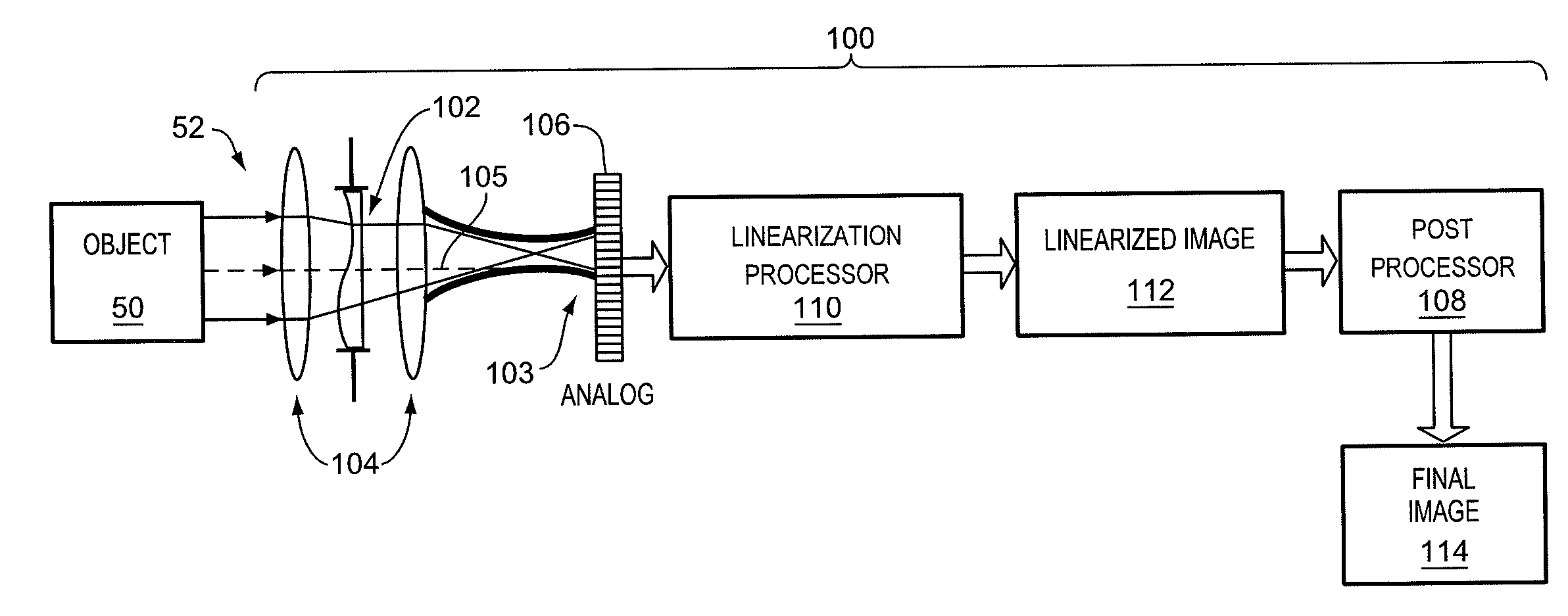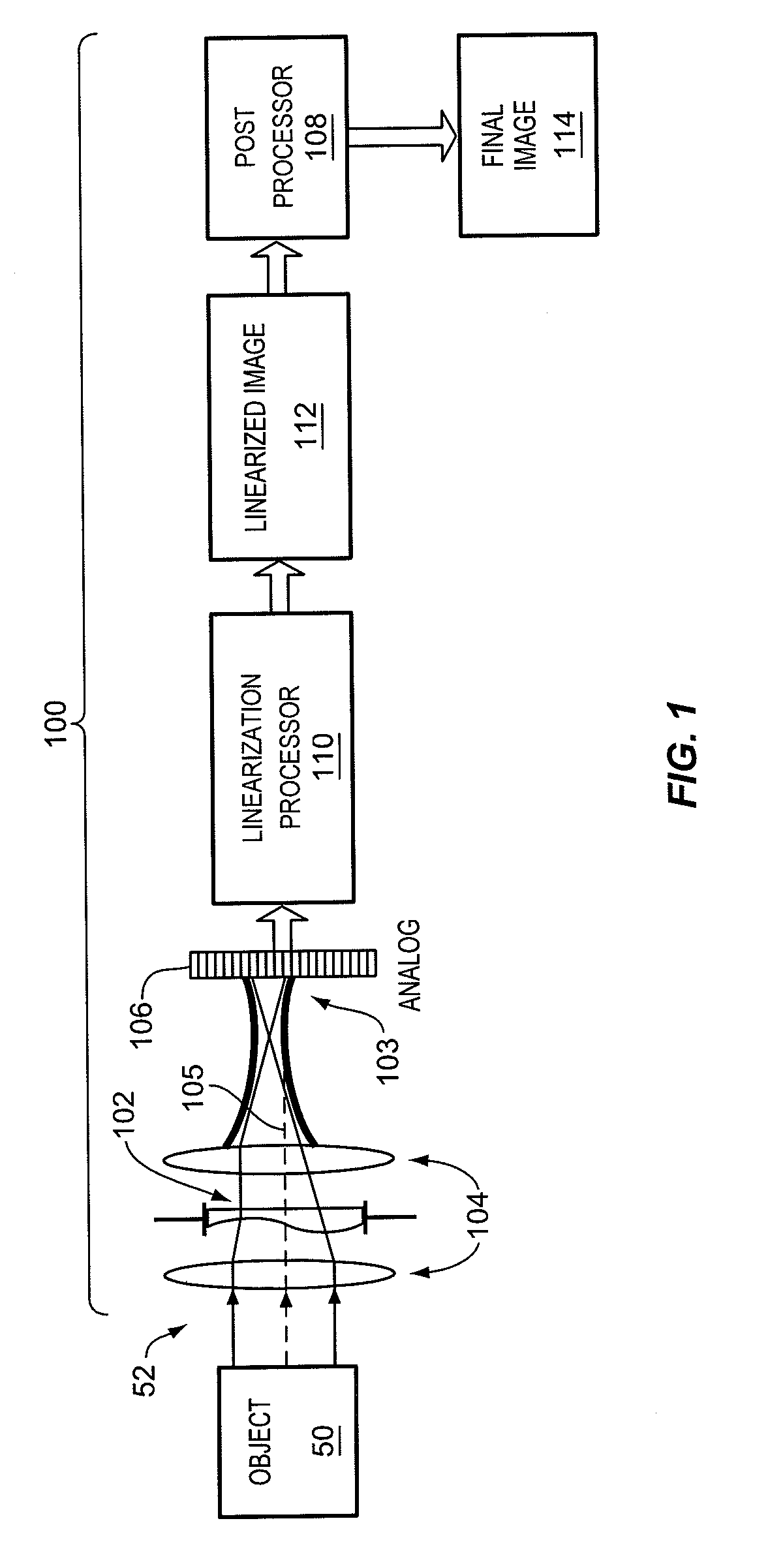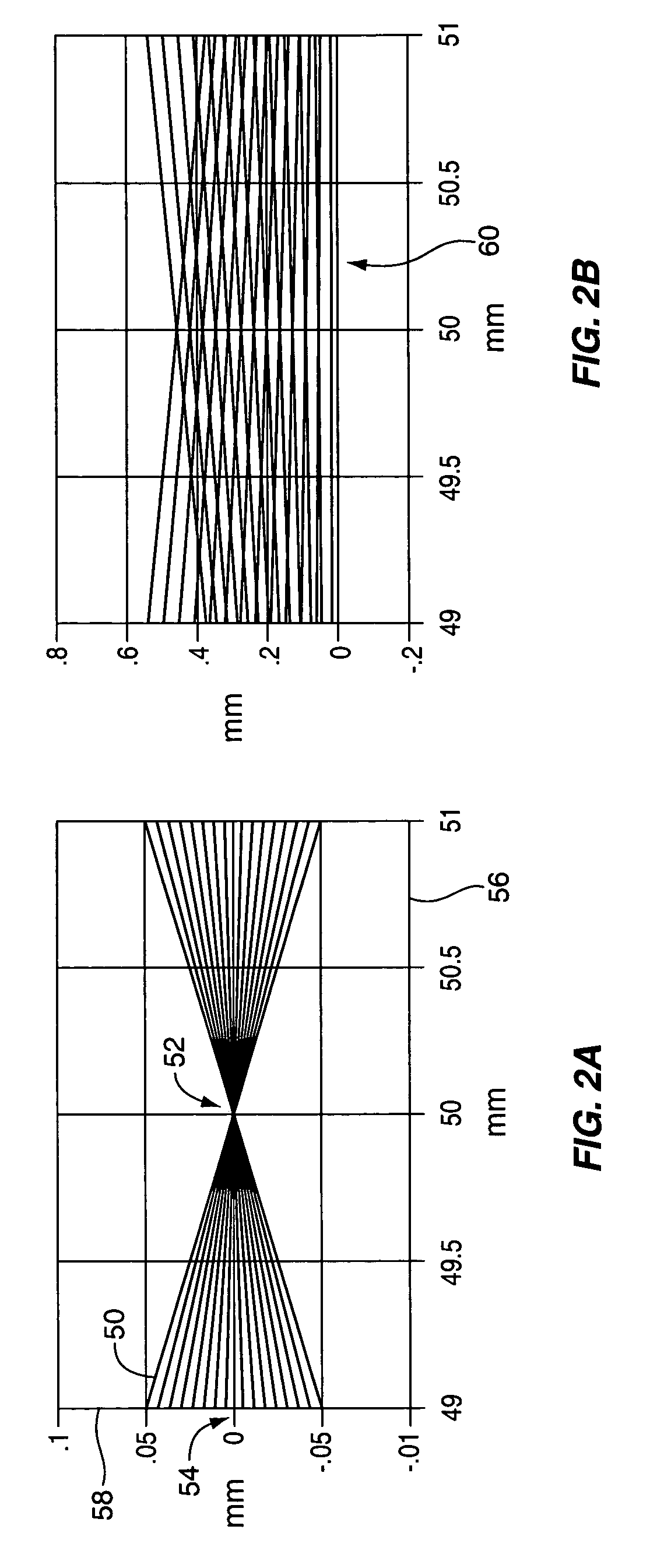Non-linear wavefront coding systems and methods
a coding system and wavefront technology, applied in the field of non-linear wavefront coding systems and methods, can solve the problems of difficult to accurately and fully image real objects, image will be out of focus, and traditional imaging systems suffer from a number of setbacks, so as to reduce aberrations
- Summary
- Abstract
- Description
- Claims
- Application Information
AI Technical Summary
Benefits of technology
Problems solved by technology
Method used
Image
Examples
Embodiment Construction
[0018]A non-linear imaging system 100 that extends depth of field is shown generally in FIG. 1. System 100 includes (a) optics 102 that may, for example, take the form of an optical phase mask, (b) optical elements (e.g., lenses and / or mirrors) 104, (c) a non-linear detector 106, and (d) a post processor 108. Optics 102 and elements 104 cooperate to image electromagnetic radiation 52 from object 50 to an intermediate image 103, which is then captured by non-linear detector 106. Electromagnetic radiation 52 may be in one or more of the visible spectrum, infrared spectrum, ultraviolet spectrum, radio wave spectrum, or another part of the electromagnetic spectrum. Optics 102“encode” the optical wavefront within system 100, as described below, to spatially blur points of imaged object 50 about intermediate image 103 (e.g., along optical axis 105).
[0019]Intermediate image 103 does not, therefore, occupy a single focal point as in traditional imaging systems. An exemplary ray path-based e...
PUM
 Login to View More
Login to View More Abstract
Description
Claims
Application Information
 Login to View More
Login to View More - R&D
- Intellectual Property
- Life Sciences
- Materials
- Tech Scout
- Unparalleled Data Quality
- Higher Quality Content
- 60% Fewer Hallucinations
Browse by: Latest US Patents, China's latest patents, Technical Efficacy Thesaurus, Application Domain, Technology Topic, Popular Technical Reports.
© 2025 PatSnap. All rights reserved.Legal|Privacy policy|Modern Slavery Act Transparency Statement|Sitemap|About US| Contact US: help@patsnap.com



